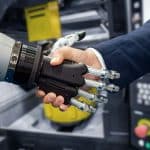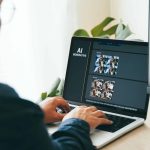As businesses continually search for innovative ways to engage their teams and improve productivity, the concept of gamification in the corporate learning landscape has rapidly gained traction. By gaming elements into employee training, companies are not only able to inject fun into the learning process but also drastically increase engagement levels, and ultimately, drive exceptional results.
Understanding Gamification and its Relevance in Corporate Training
Before diving into the ways to utilize gamification in training, it’s vital to fully understand the concept. Gamification is the process of incorporating game mechanics into non-game contexts, such as training and learning environments. This technique taps into the natural human desire for competition, rewards, and status, thus fostering motivation, engagement, and loyalty.
A voir aussi : What are innovative approaches to employee mental health in remote work settings?
In the context of corporate training, gamification is not about turning serious learning events into games. Instead, it’s about using game elements to make learning more engaging and effective. With this technique, employees become active learners, immersed in the learning experience, and motivated to achieve goals.
Why Gamification Works in Employee Training
A recent study suggests that nearly 80% of learners claim they would be more productive if their work or training were more game-like. Gamification works in employee training because it appeals to the intrinsic motivations of people — the desire to compete, the thrill of achievement, and the joy of problem-solving.
A voir aussi : What are the best strategies for cross-cultural business expansion?
Engagement is the key here. The modern workplace is fraught with distractions, making it tough for training programs to hold the attention of employees. By using elements like points, levels, rewards, or leaderboards, gamification makes learning fun and captivating, leading to increased focus and retention.
Moreover, gamification provides immediate feedback, allowing employees to understand where they stand and what they need to do to improve. This dynamic, interactive environment not only boosts learning outcomes but also empowers employees to take responsibility for their growth.
Implementing Gamification in Your Employee Training Program
Incorporating gamification in your training program is not as daunting as it may seem. The key is to have a clear understanding of your learning objectives, your employee demographics, and what motivates them.
The first step to gamification is setting clear, attainable goals. Goals give your employees a sense of purpose and a reason to engage with the training. Leaderboards or progress bars can be used to demonstrate the progress towards these goals, providing a visual representation of achievement.
Next, incorporate rewards into your program. Rewards can be as simple as points, badges, or certificates of completion. Alternatively, they may also be tangible, such as gift cards or bonuses. When employees see that their effort has a tangible outcome, they will be more motivated to engage with the training.
Lastly, do not underestimate the power of competition. A friendly competition can drive motivation and participation. Consider creating challenges or quests that employees can compete against one another to complete.
The Potential Benefits of Gamified Training for Your Company
The benefits of gamified training extend far beyond merely making learning fun. When executed well, it can lead to substantial improvements in your company’s overall performance.
One of the most significant benefits is increased employee engagement. Gamified training courses require employees to actively participate, keeping their interest piqued and their engagement levels high. This active involvement can lead to better understanding and retention of information.
Another crucial benefit is the promotion of a continuous learning culture. Gamification’s immediate feedback mechanisms can help employees identify gaps in their knowledge and skills, encouraging them to seek further learning opportunities.
Finally, gamified training can also foster a sense of camaraderie and team spirit. By incorporating elements of collaboration and competition, gamified training can strengthen interpersonal relationships and promote a more cohesive, productive workforce.
Measuring The Success of Your Gamified Training Program
Once you’ve implemented gamification into your training program, it’s essential to measure its success. Key performance indicators (KPIs) can help you evaluate whether your gamified training is achieving its intended objectives.
Some useful KPIs might include completion rates, engagement levels, knowledge retention, and application of learned skills in the workplace. Regularly reviewing and analysing these metrics will help you refine and optimize your gamified training program over time.
Remember, the primary aim of gamification is to make learning more engaging and enjoyable. If your employees look forward to training sessions and are applying what they’ve learned to their work, it’s a clear sign that your gamified training program is a success.
Best Practices for Applying Gamification in Corporate Training
While gamification can significantly enhance employee engagement and learning outcomes, effectively incorporating it into your training program demands meticulous planning and execution. Here are several best practices that can optimize the results of your gamified training initiatives.
Firstly, align gamification with your learning objectives. The game mechanics should be designed to support and reinforce the skills or knowledge you aim to impart. This alignment ensures that the gamification serves a purpose beyond mere entertainment.
Secondly, create a balance between competition and collaboration. While competition can drive motivation, too much of it may create a stressful environment. On the other hand, collaborative tasks can foster teamwork and collective problem-solving capabilities. Therefore, it’s important to create an equilibrium that best suits your organizational culture.
Thirdly, provide real-time feedback. Gamification’s real power lies in its ability to provide immediate feedback, allowing learners to understand their progress, identify areas of improvement, and adjust their strategies accordingly. Therefore, incorporate components like progress bars, points, badges, or leaderboards to offer real-time insights into individual and team performance.
Lastly, keep refining your gamification strategy. As with any training development, it’s crucial to continuously evaluate and adjust your gamification efforts based on feedback and measurable outcomes.
Incorporating Compliance Training into Your Gamified Learning Program
Compliance training is essential for companies to ensure employees understand and follow laws, regulations, and company policies. However, this type of training is often viewed as dull and tedious. But with gamification, you can make compliance training engaging and enjoyable.
For example, you can create a virtual scenario where employees have to navigate through various challenges, and by doing so, they learn about the company’s policies and regulations. Points or badges can be awarded for correctly answering questions or completing tasks related to the compliance training.
This approach not only makes the learning fun but also allows employees to practically apply their knowledge in a risk-free environment. Furthermore, it helps in better retention of information as employees are more likely to remember something they enjoyed doing.
In conclusion, gamification is a powerful tool that can transform corporate training. By tapping into the natural human desire for competition, rewards, and achievement, gamification can make learning more engaging, enjoyable, and effective. Whether it’s compliance training or skill development, gamifying your training program can lead to higher employee engagement, better retention of knowledge, and ultimately, a more productive workforce. However, to reap the full benefits of gamification, it’s crucial to strategically align it with your learning objectives and continuously refine your strategy based on feedback and outcomes.











